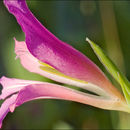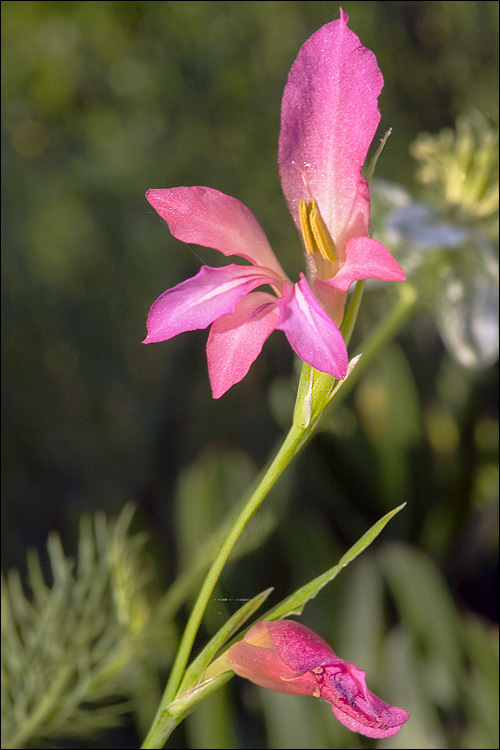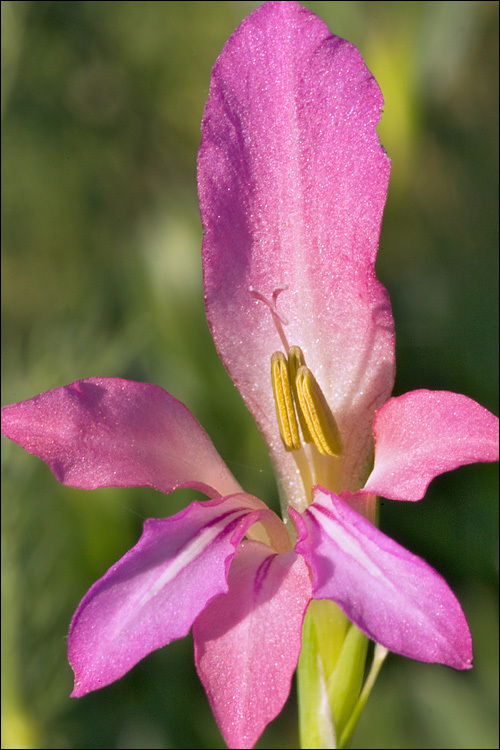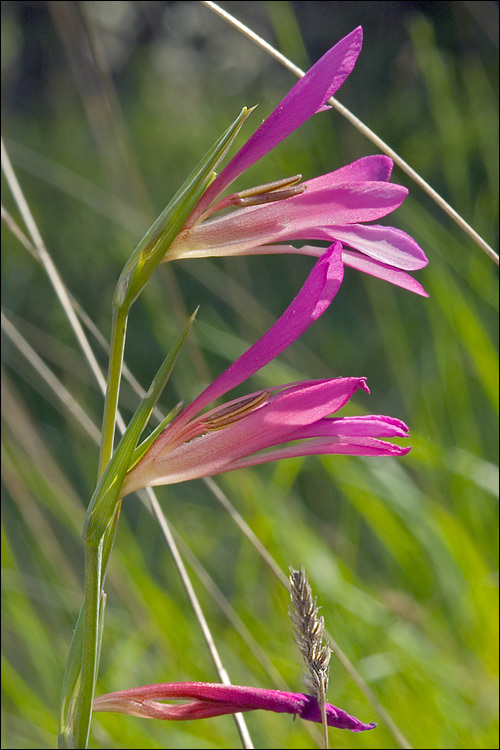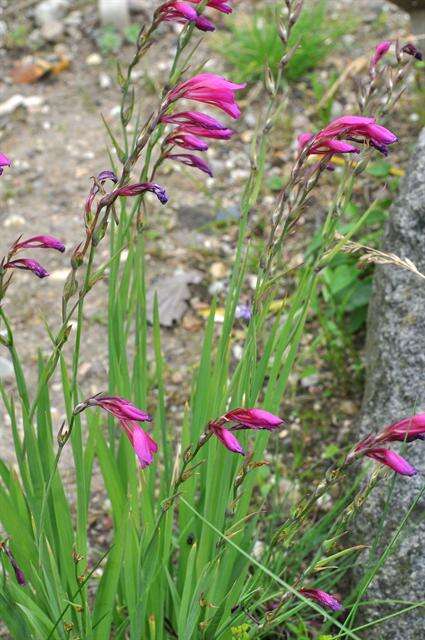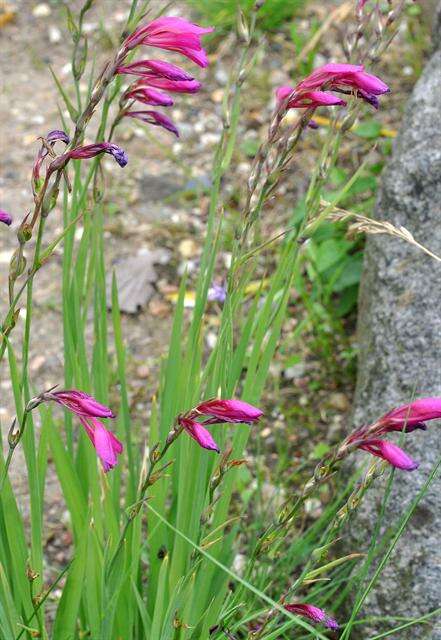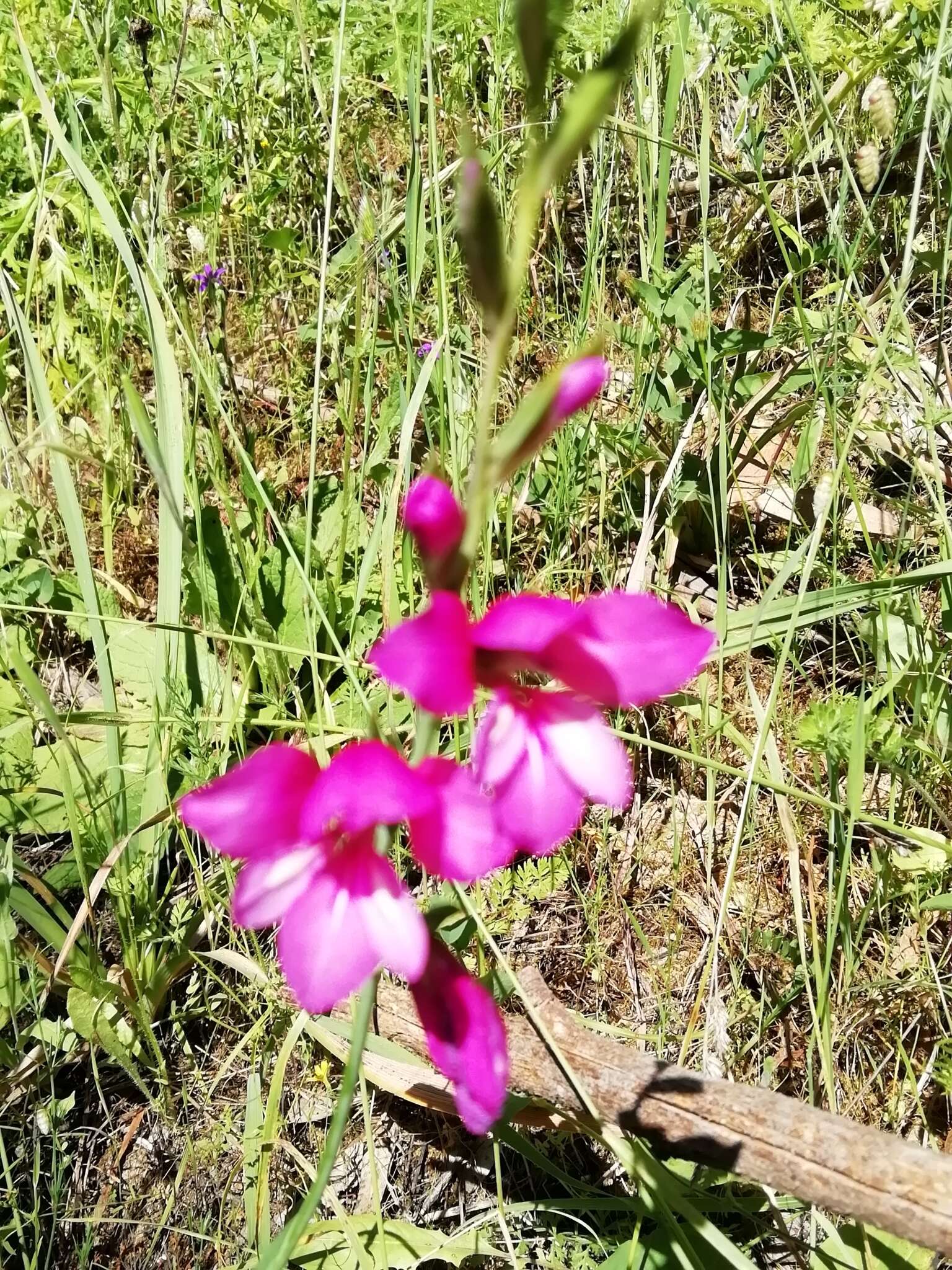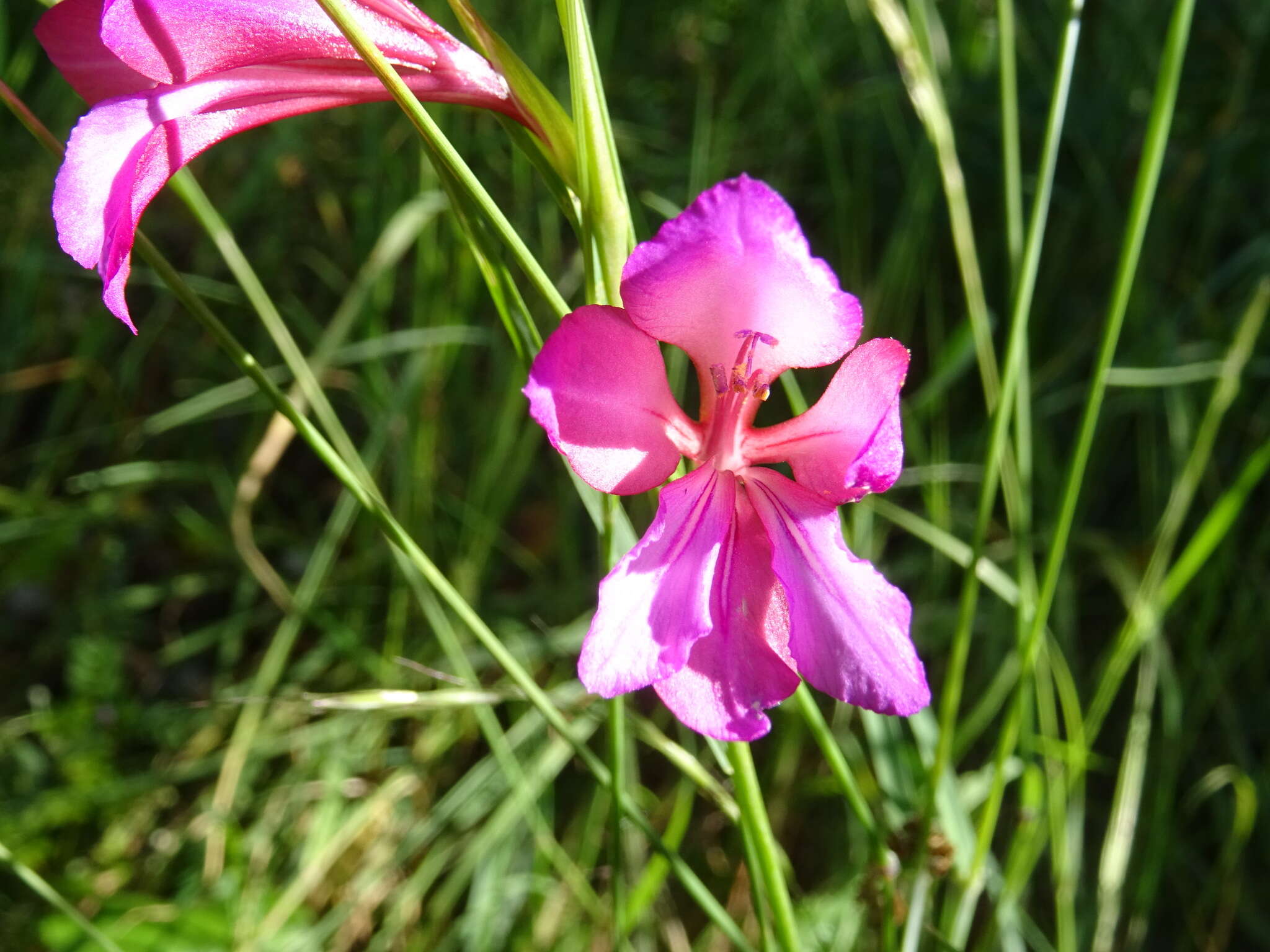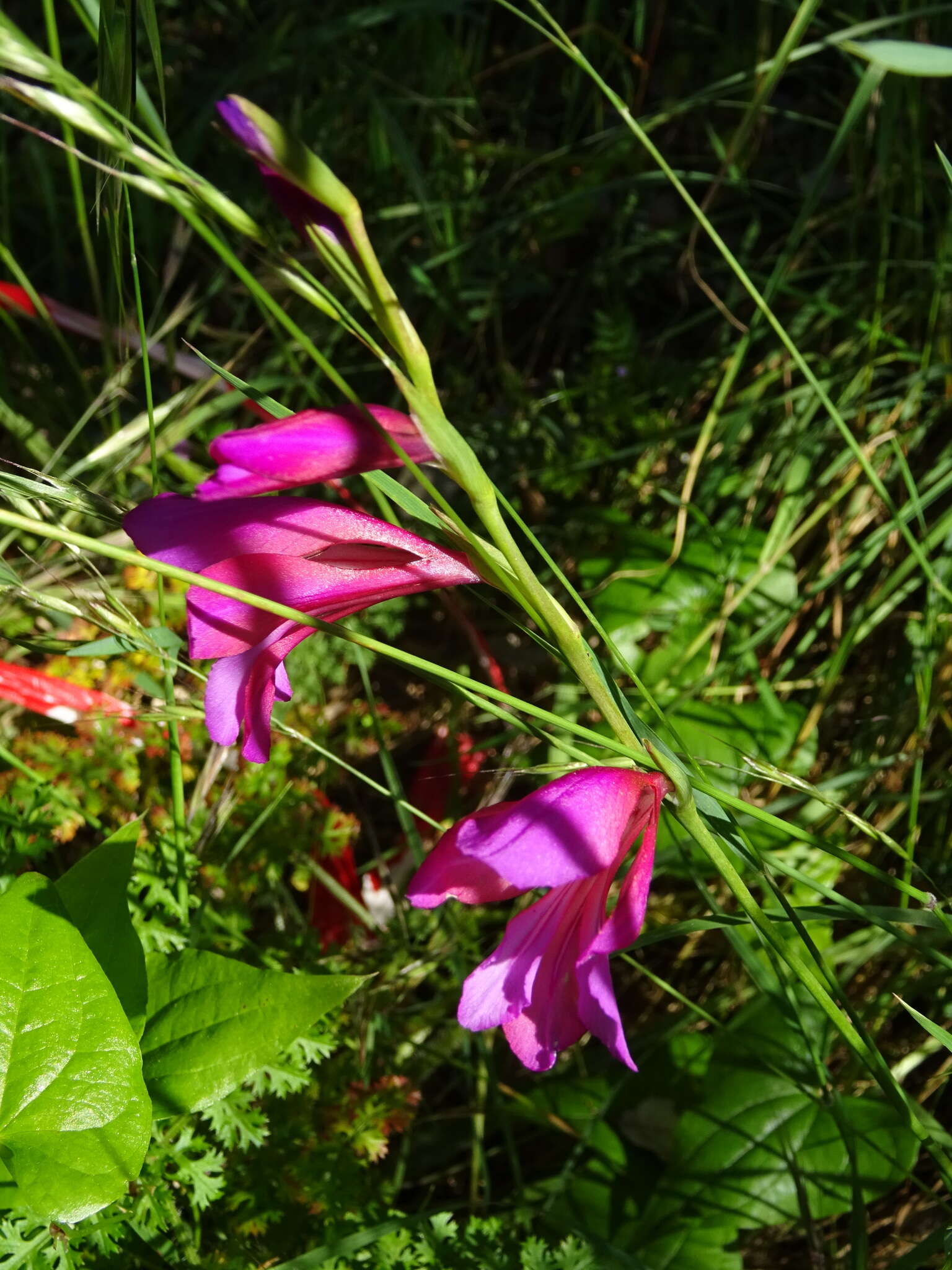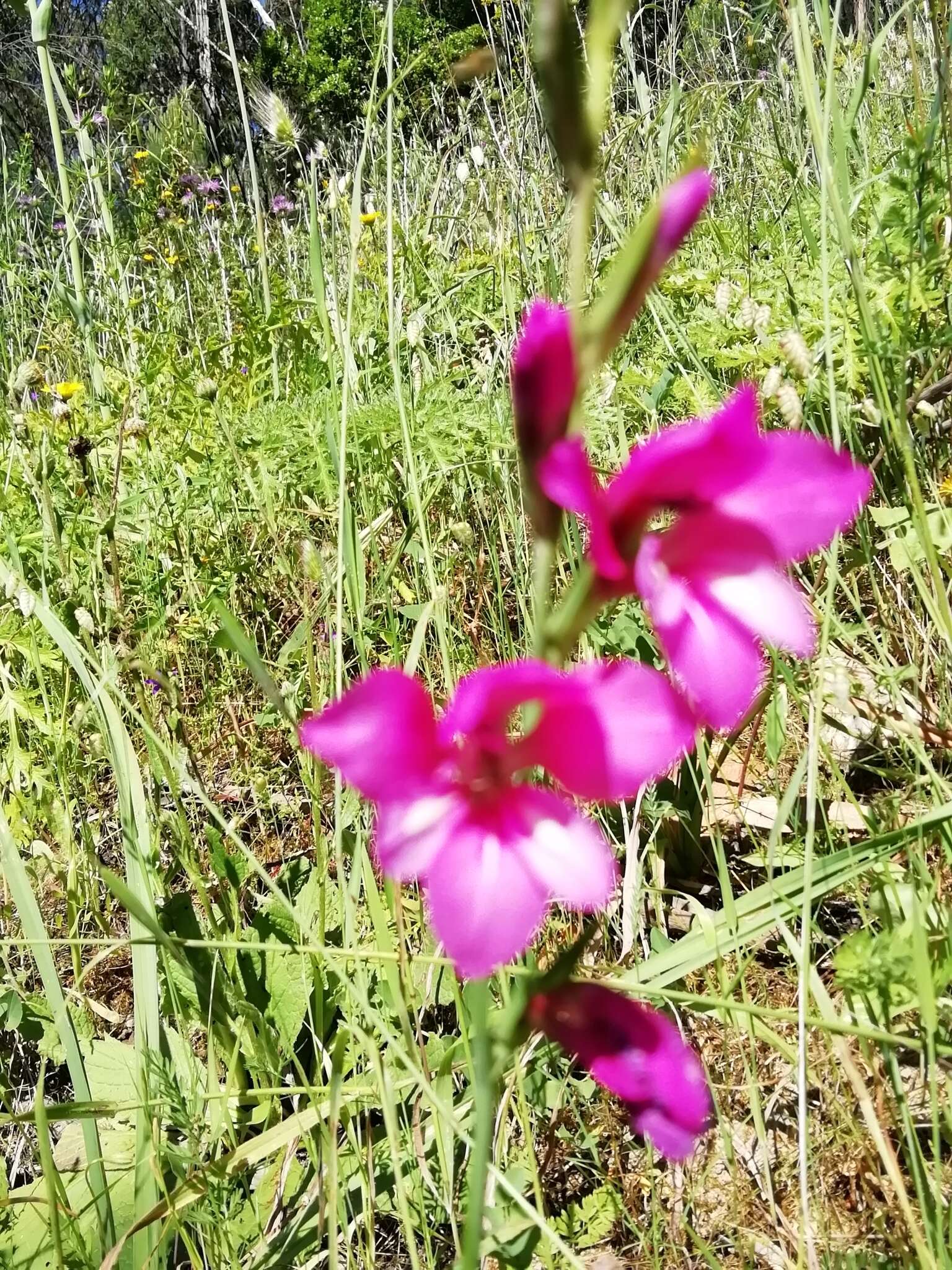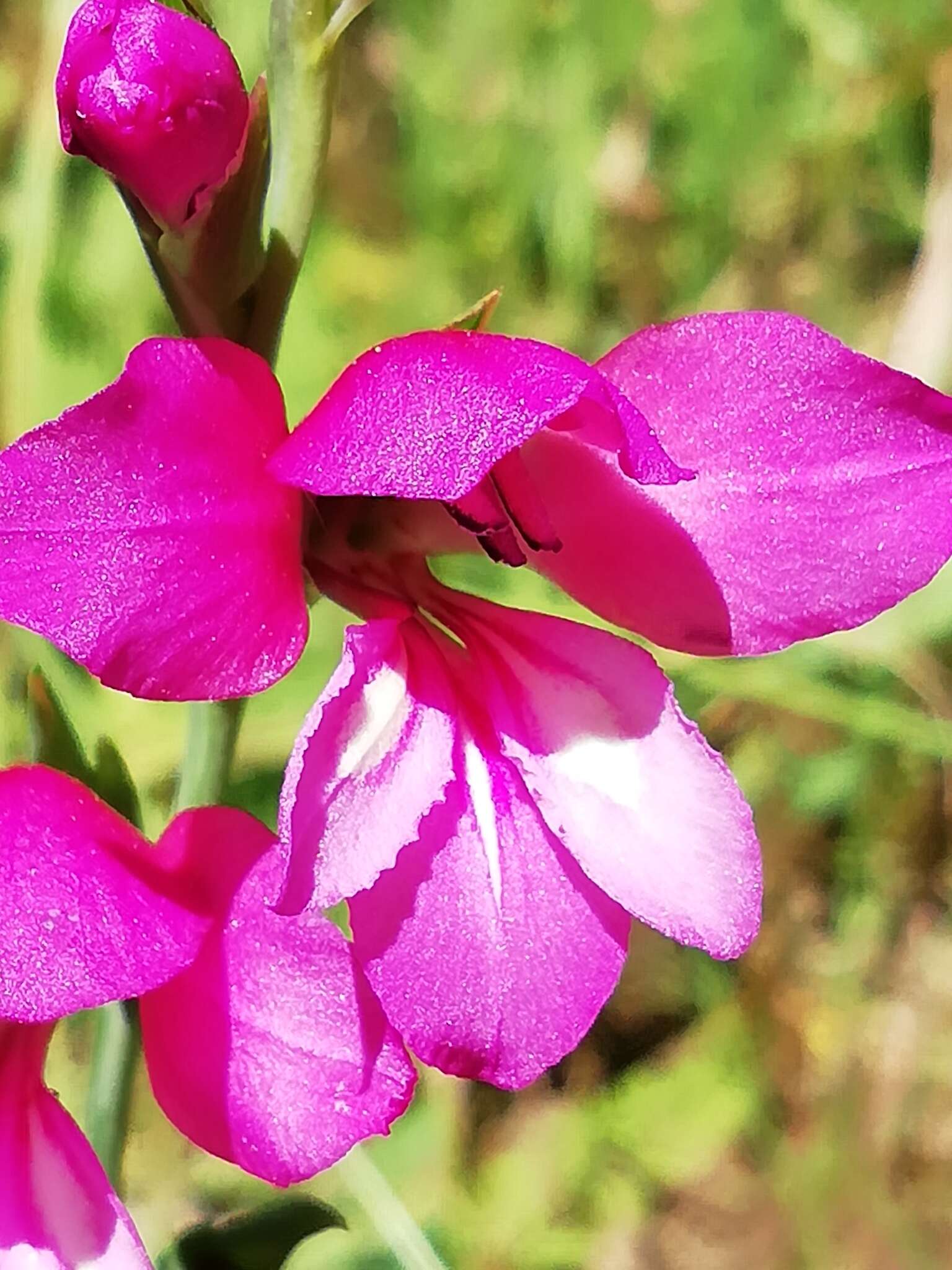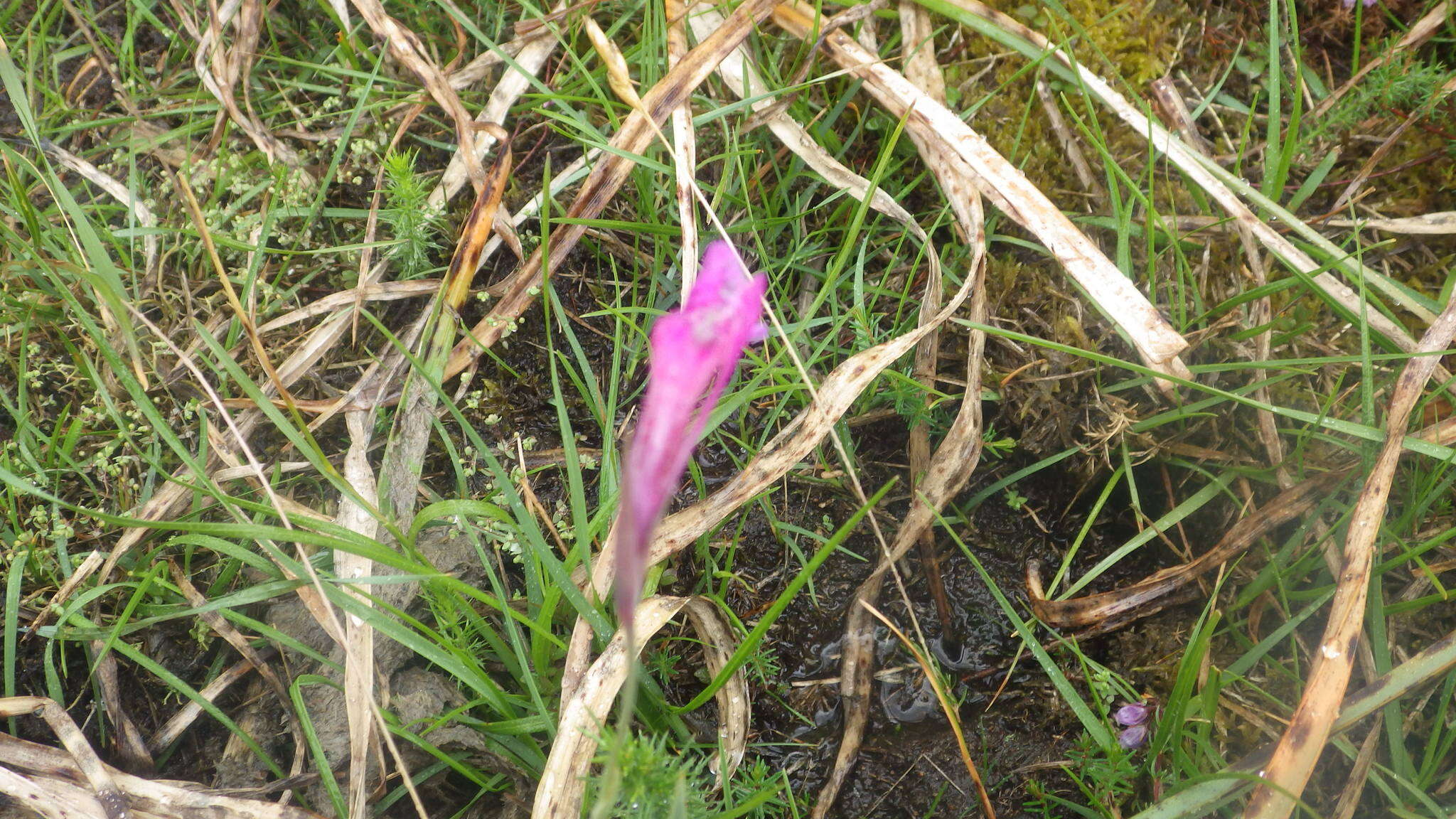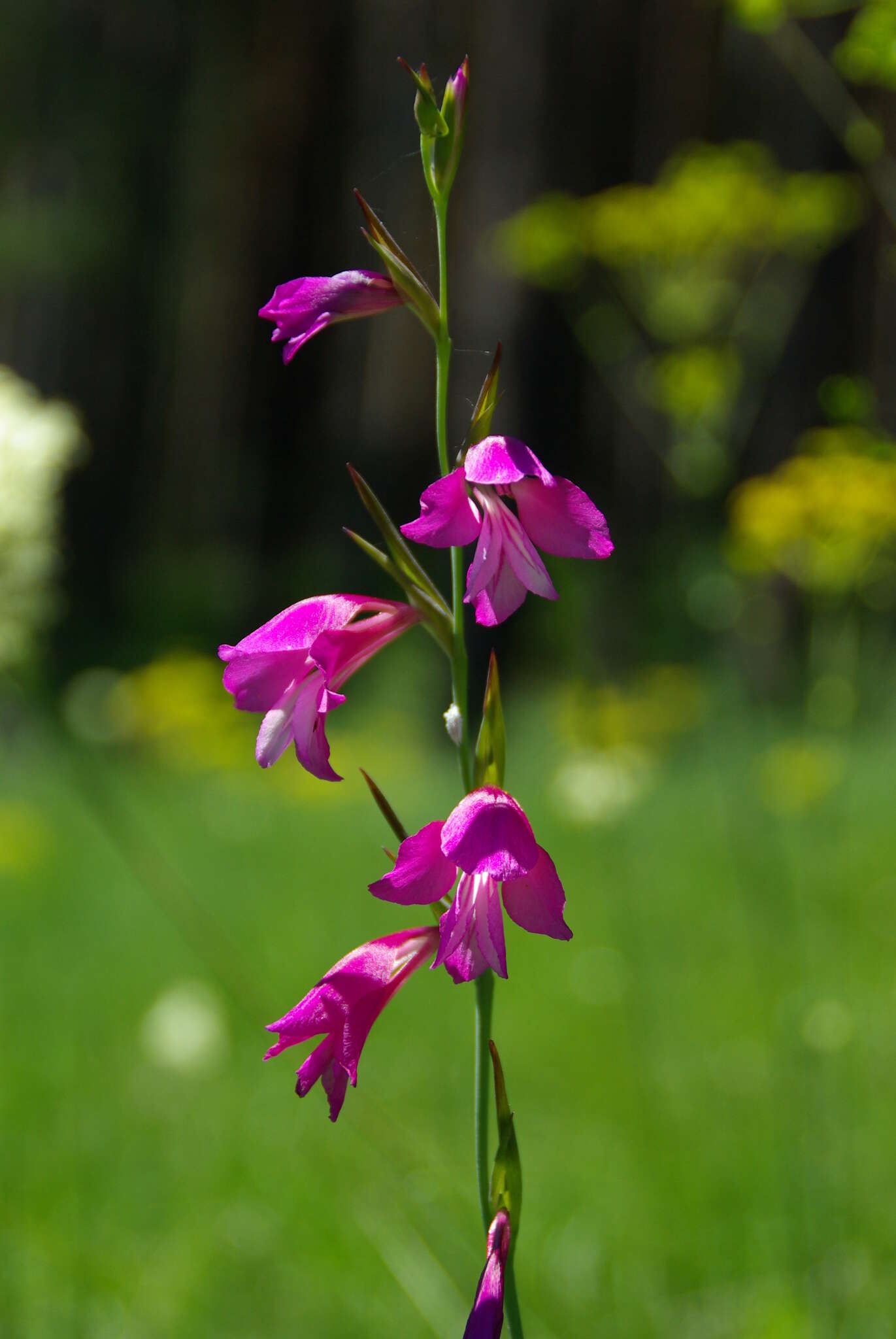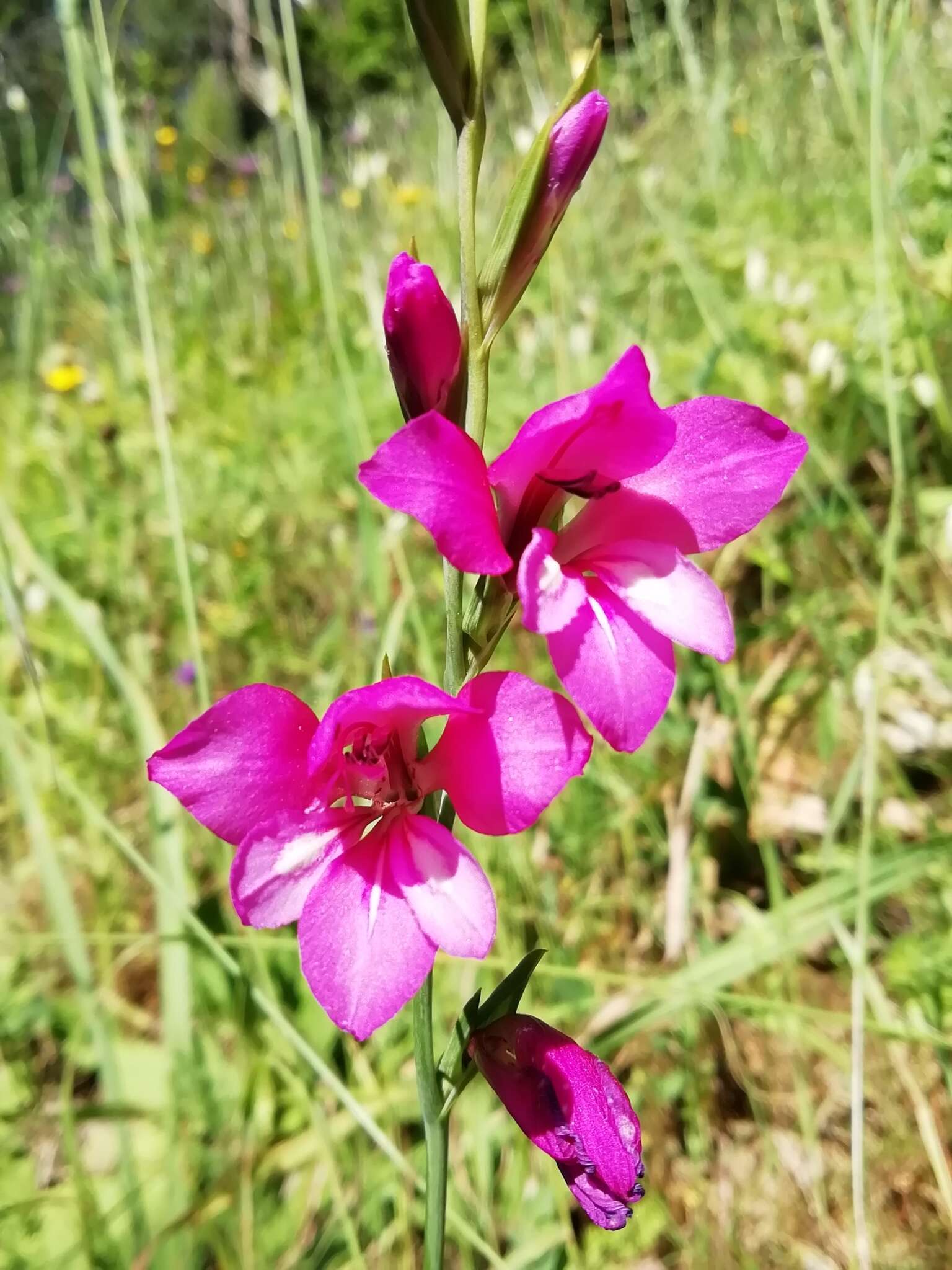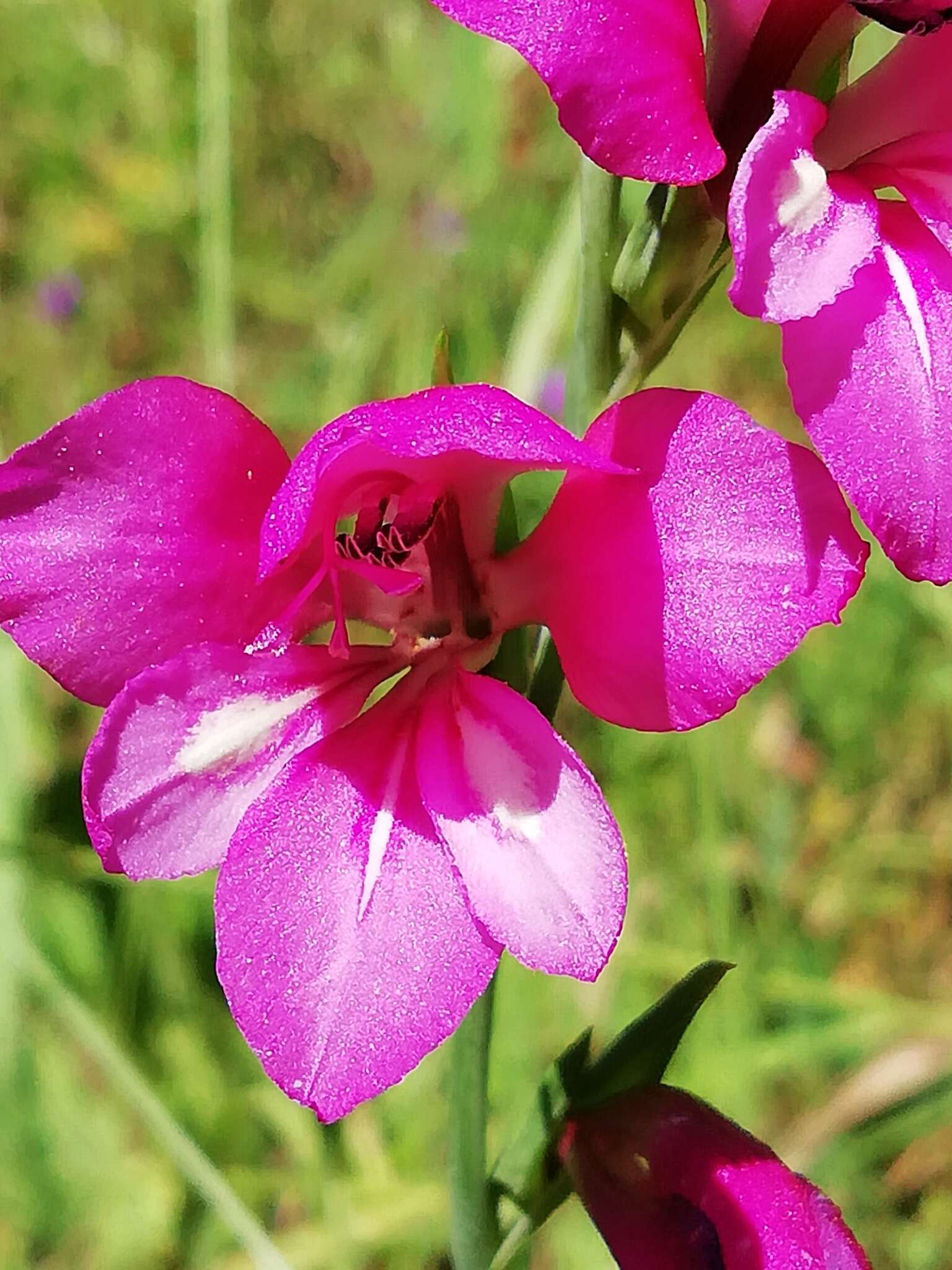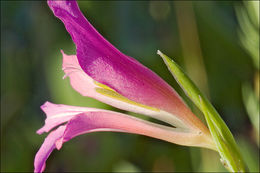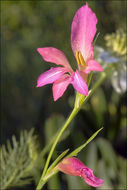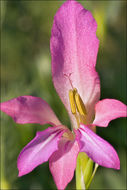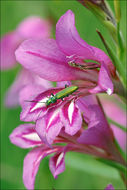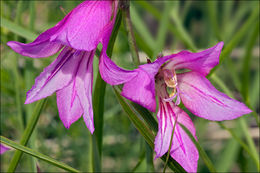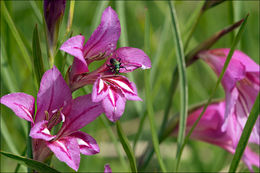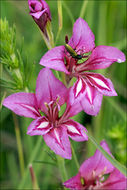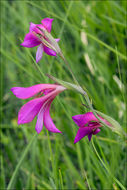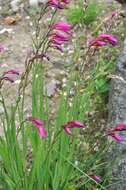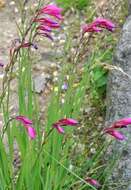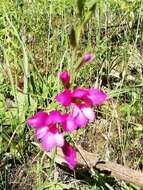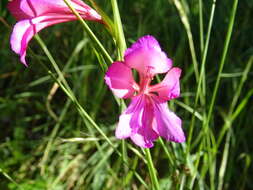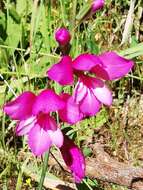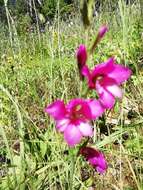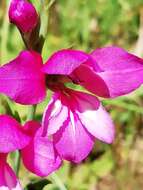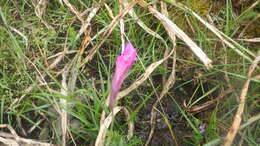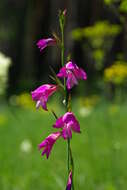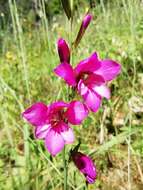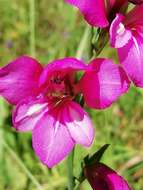-
Slo.: ilirski mecek
-
Slo.: ilirski mecek
-
Slo.: ilirski mecek
-
Slo.: ilirski mecek
-
Slo.: ilirski mecek
-
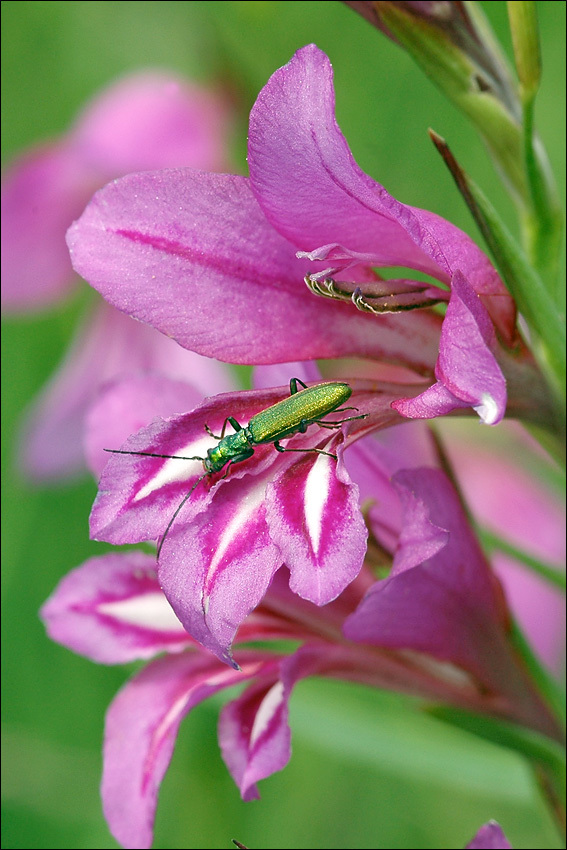
Slo.: ilirski meček - Habitat: grassland near mixed wood side, high grasses with many low Crataegus sp. bushes, near intermittent karst lake shore, flat terrain, humid place, mostly sunny, exposed to direct rain, average precipitations 1.600-1.800 mm/year, average temperature 8-10 deg C, elevation 535 m (1.750 feet), Dinaric phytogeographical region. - Substratum: soil. - Comment: To find Gladiolus illyricus growing in groups of several plants in full bloom is a wonderful experience. This plant is endangered and protected in several European countries and in some of them considered rare or very rare. Its species name 'illyricus' comes from Illyria, a historical name of a part of territory of today's Slovenia. Though, it is more common in submediterranean phytogeographical regions extending from Portugal to Lebanon.Generally it can be differentiated from very similar and a bit more common, however also endangered and protected, Gladiolus palustris by the fact that flowers of G. palustris are oriented strictly one-sided while the flowers of G. illyricus are positioned (still more or less one-sided) in two rows. However, in practice, particularly with plants with only a few flowers, it is hard or even impossible to tell apart both species by this trait. More reliable distinguishing is based on the type of outer fibers of their underground parts. But for an amateur botanist this doesn't help much in practice, since both species are protected and rare and it is not fair to dig them out of ground just because of curiosity. - Protected according to 'Uredba o zavarovanih prostoivečih rastlinskih vrstah' Ur.l. RS, t.46/2004 (Regulation of protection of wild plants, Official Gazette of Republic Slovenia, no. 46/2004). Enlisted in the Slovene Red List of rare and endangered species, marked by 'V' representing a vulnerable species. - Ref.: (1) M.A. Fischer, W. Adler, K. Oswald, Exkursionsflora sterreich, Liechtenstein, Sdtirol, LO Landesmuseen, Linz, Austria (2005), p 1025. (2) A. Martinči et all., Mala Flora Slovenije, Tehnična Zaloba Slovenije (2007), p 755. (3) P. Skobrne, Zavarovane rastline Slovenije (Protected plants of Slovenia), in Slovene, Mladinska Knjiga (2007), p70.
-

Slo.: ilirski meček - Habitat: grassland near mixed wood side, high grasses with many low Crataegus sp. bushes, near intermittent karst lake shore, flat terrain, humid place, mostly sunny, exposed to direct rain, average precipitations 1.600-1.800 mm/year, average temperature 8-10 deg C, elevation 535 m (1.750 feet), Dinaric phytogeographical region. - Substratum: soil. - Comment: To find Gladiolus illyricus growing in groups of several plants in full bloom is a wonderful experience. This plant is endangered and protected in several European countries and in some of them considered rare or very rare. Its species name 'illyricus' comes from Illyria, a historical name of a part of territory of today's Slovenia. Though, it is more common in submediterranean phytogeographical regions extending from Portugal to Lebanon.Generally it can be differentiated from very similar and a bit more common, however also endangered and protected, Gladiolus palustris by the fact that flowers of G. palustris are oriented strictly one-sided while the flowers of G. illyricus are positioned (still more or less one-sided) in two rows. However, in practice, particularly with plants with only a few flowers, it is hard or even impossible to tell apart both species by this trait. More reliable distinguishing is based on the type of outer fibers of their underground parts. But for an amateur botanist this doesn't help much in practice, since both species are protected and rare and it is not fair to dig them out of ground just because of curiosity. - Protected according to 'Uredba o zavarovanih prostoivečih rastlinskih vrstah' Ur.l. RS, t.46/2004 (Regulation of protection of wild plants, Official Gazette of Republic Slovenia, no. 46/2004). Enlisted in the Slovene Red List of rare and endangered species, marked by 'V' representing a vulnerable species. - Ref.: (1) M.A. Fischer, W. Adler, K. Oswald, Exkursionsflora sterreich, Liechtenstein, Sdtirol, LO Landesmuseen, Linz, Austria (2005), p 1025. (2) A. Martinči et all., Mala Flora Slovenije, Tehnična Zaloba Slovenije (2007), p 755. (3) P. Skobrne, Zavarovane rastline Slovenije (Protected plants of Slovenia), in Slovene, Mladinska Knjiga (2007), p70.
-

Slo.: ilirski meček - Habitat: grassland near mixed wood side, high grasses with many low Crataegus sp. bushes, near intermittent karst lake shore, flat terrain, humid place, mostly sunny, exposed to direct rain, average precipitations 1.600-1.800 mm/year, average temperature 8-10 deg C, elevation 535 m (1.750 feet), Dinaric phytogeographical region. - Substratum: soil. - Comment: To find Gladiolus illyricus growing in groups of several plants in full bloom is a wonderful experience. This plant is endangered and protected in several European countries and in some of them considered rare or very rare. Its species name 'illyricus' comes from Illyria, a historical name of a part of territory of today's Slovenia. Though, it is more common in submediterranean phytogeographical regions extending from Portugal to Lebanon.Generally it can be differentiated from very similar and a bit more common, however also endangered and protected, Gladiolus palustris by the fact that flowers of G. palustris are oriented strictly one-sided while the flowers of G. illyricus are positioned (still more or less one-sided) in two rows. However, in practice, particularly with plants with only a few flowers, it is hard or even impossible to tell apart both species by this trait. More reliable distinguishing is based on the type of outer fibers of their underground parts. But for an amateur botanist this doesn't help much in practice, since both species are protected and rare and it is not fair to dig them out of ground just because of curiosity. - Protected according to 'Uredba o zavarovanih prostoivečih rastlinskih vrstah' Ur.l. RS, t.46/2004 (Regulation of protection of wild plants, Official Gazette of Republic Slovenia, no. 46/2004). Enlisted in the Slovene Red List of rare and endangered species, marked by 'V' representing a vulnerable species. - Ref.: (1) M.A. Fischer, W. Adler, K. Oswald, Exkursionsflora sterreich, Liechtenstein, Sdtirol, LO Landesmuseen, Linz, Austria (2005), p 1025. (2) A. Martinči et all., Mala Flora Slovenije, Tehnična Zaloba Slovenije (2007), p 755. (3) P. Skobrne, Zavarovane rastline Slovenije (Protected plants of Slovenia), in Slovene, Mladinska Knjiga (2007), p70.
-

Slo.: ilirski meček - Habitat: grassland near mixed wood side, high grasses with many low Crataegus sp. bushes, near intermittent karst lake shore, flat terrain, humid place, mostly sunny, exposed to direct rain, average precipitations 1.600-1.800 mm/year, average temperature 8-10 deg C, elevation 535 m (1.750 feet), Dinaric phytogeographical region. - Substratum: soil. - Comment: To find Gladiolus illyricus growing in groups of several plants in full bloom is a wonderful experience. This plant is endangered and protected in several European countries and in some of them considered rare or very rare. Its species name 'illyricus' comes from Illyria, a historical name of a part of territory of today's Slovenia. Though, it is more common in submediterranean phytogeographical regions extending from Portugal to Lebanon.Generally it can be differentiated from very similar and a bit more common, however also endangered and protected, Gladiolus palustris by the fact that flowers of G. palustris are oriented strictly one-sided while the flowers of G. illyricus are positioned (still more or less one-sided) in two rows. However, in practice, particularly with plants with only a few flowers, it is hard or even impossible to tell apart both species by this trait. More reliable distinguishing is based on the type of outer fibers of their underground parts. But for an amateur botanist this doesn't help much in practice, since both species are protected and rare and it is not fair to dig them out of ground just because of curiosity. - Protected according to 'Uredba o zavarovanih prostoivečih rastlinskih vrstah' Ur.l. RS, t.46/2004 (Regulation of protection of wild plants, Official Gazette of Republic Slovenia, no. 46/2004). Enlisted in the Slovene Red List of rare and endangered species, marked by 'V' representing a vulnerable species. - Ref.: (1) M.A. Fischer, W. Adler, K. Oswald, Exkursionsflora sterreich, Liechtenstein, Sdtirol, LO Landesmuseen, Linz, Austria (2005), p 1025. (2) A. Martinči et all., Mala Flora Slovenije, Tehnična Zaloba Slovenije (2007), p 755. (3) P. Skobrne, Zavarovane rastline Slovenije (Protected plants of Slovenia), in Slovene, Mladinska Knjiga (2007), p70.
-

Slo.: ilirski meček - Habitat: grassland near mixed wood side, high grasses with many low Crataegus sp. bushes, near intermittent karst lake shore, flat terrain, humid place, mostly sunny, exposed to direct rain, average precipitations 1.600-1.800 mm/year, average temperature 8-10 deg C, elevation 535 m (1.750 feet), Dinaric phytogeographical region. - Substratum: soil. - Comment: To find Gladiolus illyricus growing in groups of several plants in full bloom is a wonderful experience. This plant is endangered and protected in several European countries and in some of them considered rare or very rare. Its species name 'illyricus' comes from Illyria, a historical name of a part of territory of today's Slovenia. Though, it is more common in submediterranean phytogeographical regions extending from Portugal to Lebanon.Generally it can be differentiated from very similar and a bit more common, however also endangered and protected, Gladiolus palustris by the fact that flowers of G. palustris are oriented strictly one-sided while the flowers of G. illyricus are positioned (still more or less one-sided) in two rows. However, in practice, particularly with plants with only a few flowers, it is hard or even impossible to tell apart both species by this trait. More reliable distinguishing is based on the type of outer fibers of their underground parts. But for an amateur botanist this doesn't help much in practice, since both species are protected and rare and it is not fair to dig them out of ground just because of curiosity. - Protected according to 'Uredba o zavarovanih prostoivečih rastlinskih vrstah' Ur.l. RS, t.46/2004 (Regulation of protection of wild plants, Official Gazette of Republic Slovenia, no. 46/2004). Enlisted in the Slovene Red List of rare and endangered species, marked by 'V' representing a vulnerable species. - Ref.: (1) M.A. Fischer, W. Adler, K. Oswald, Exkursionsflora sterreich, Liechtenstein, Sdtirol, LO Landesmuseen, Linz, Austria (2005), p 1025. (2) A. Martinči et all., Mala Flora Slovenije, Tehnična Zaloba Slovenije (2007), p 755. (3) P. Skobrne, Zavarovane rastline Slovenije (Protected plants of Slovenia), in Slovene, Mladinska Knjiga (2007), p70.
-
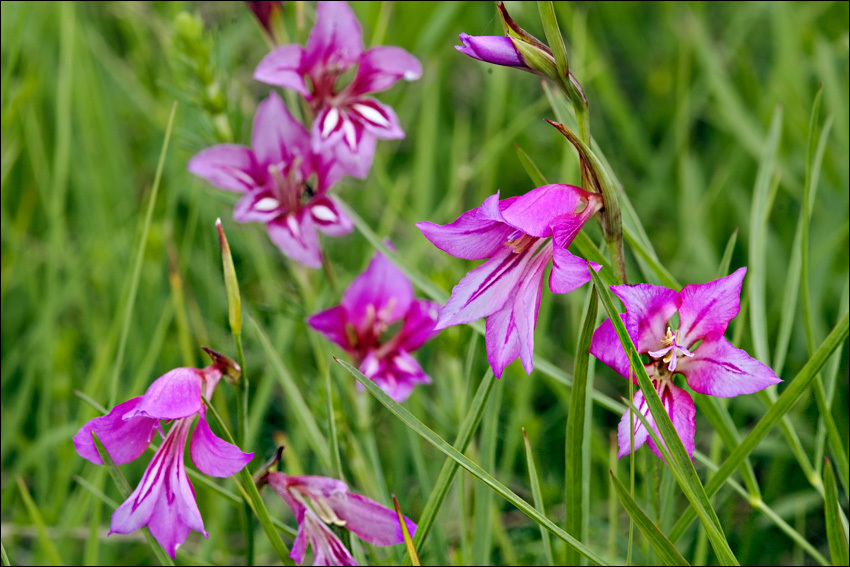
Slo.: ilirski meček - Habitat: grassland near mixed wood side, high grasses with many low Crataegus sp. bushes, near intermittent karst lake shore, flat terrain, humid place, mostly sunny, exposed to direct rain, average precipitations 1.600-1.800 mm/year, average temperature 8-10 deg C, elevation 535 m (1.750 feet), Dinaric phytogeographical region. - Substratum: soil. - Comment: To find Gladiolus illyricus growing in groups of several plants in full bloom is a wonderful experience. This plant is endangered and protected in several European countries and in some of them considered rare or very rare. Its species name 'illyricus' comes from Illyria, a historical name of a part of territory of today's Slovenia. Though, it is more common in submediterranean phytogeographical regions extending from Portugal to Lebanon.Generally it can be differentiated from very similar and a bit more common, however also endangered and protected, Gladiolus palustris by the fact that flowers of G. palustris are oriented strictly one-sided while the flowers of G. illyricus are positioned (still more or less one-sided) in two rows. However, in practice, particularly with plants with only a few flowers, it is hard or even impossible to tell apart both species by this trait. More reliable distinguishing is based on the type of outer fibers of their underground parts. But for an amateur botanist this doesn't help much in practice, since both species are protected and rare and it is not fair to dig them out of ground just because of curiosity. - Protected according to 'Uredba o zavarovanih prostoivečih rastlinskih vrstah' Ur.l. RS, t.46/2004 (Regulation of protection of wild plants, Official Gazette of Republic Slovenia, no. 46/2004). Enlisted in the Slovene Red List of rare and endangered species, marked by 'V' representing a vulnerable species. - Ref.: (1) M.A. Fischer, W. Adler, K. Oswald, Exkursionsflora sterreich, Liechtenstein, Sdtirol, LO Landesmuseen, Linz, Austria (2005), p 1025. (2) A. Martinči et all., Mala Flora Slovenije, Tehnična Zaloba Slovenije (2007), p 755. (3) P. Skobrne, Zavarovane rastline Slovenije (Protected plants of Slovenia), in Slovene, Mladinska Knjiga (2007), p70.
-
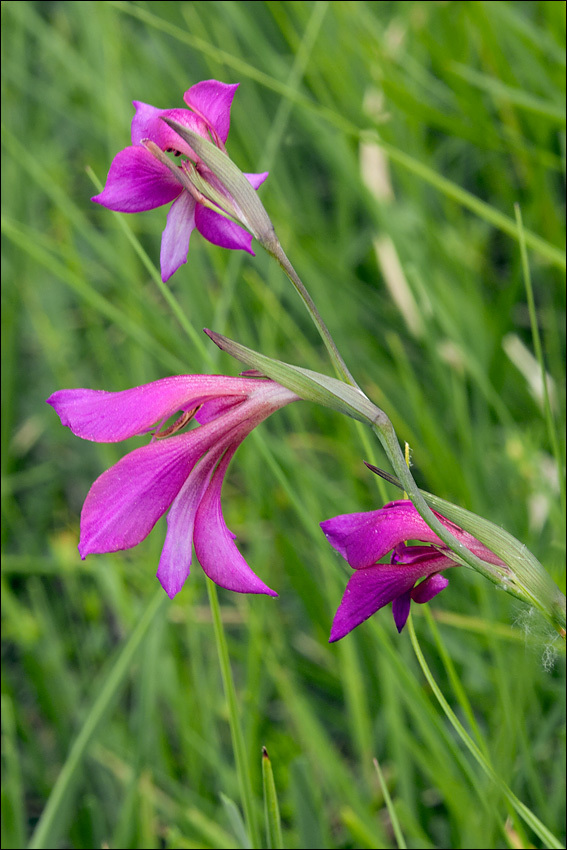
Slo.: ilirski meček - Habitat: grassland near mixed wood side, high grasses with many low Crataegus sp. bushes, near intermittent karst lake shore, flat terrain, humid place, mostly sunny, exposed to direct rain, average precipitations 1.600-1.800 mm/year, average temperature 8-10 deg C, elevation 535 m (1.750 feet), Dinaric phytogeographical region. - Substratum: soil. - Comment: To find Gladiolus illyricus growing in groups of several plants in full bloom is a wonderful experience. This plant is endangered and protected in several European countries and in some of them considered rare or very rare. Its species name 'illyricus' comes from Illyria, a historical name of a part of territory of today's Slovenia. Though, it is more common in submediterranean phytogeographical regions extending from Portugal to Lebanon.Generally it can be differentiated from very similar and a bit more common, however also endangered and protected, Gladiolus palustris by the fact that flowers of G. palustris are oriented strictly one-sided while the flowers of G. illyricus are positioned (still more or less one-sided) in two rows. However, in practice, particularly with plants with only a few flowers, it is hard or even impossible to tell apart both species by this trait. More reliable distinguishing is based on the type of outer fibers of their underground parts. But for an amateur botanist this doesn't help much in practice, since both species are protected and rare and it is not fair to dig them out of ground just because of curiosity. - Protected according to 'Uredba o zavarovanih prostoivečih rastlinskih vrstah' Ur.l. RS, t.46/2004 (Regulation of protection of wild plants, Official Gazette of Republic Slovenia, no. 46/2004). Enlisted in the Slovene Red List of rare and endangered species, marked by 'V' representing a vulnerable species. - Ref.: (1) M.A. Fischer, W. Adler, K. Oswald, Exkursionsflora sterreich, Liechtenstein, Sdtirol, LO Landesmuseen, Linz, Austria (2005), p 1025. (2) A. Martinči et all., Mala Flora Slovenije, Tehnična Zaloba Slovenije (2007), p 755. (3) P. Skobrne, Zavarovane rastline Slovenije (Protected plants of Slovenia), in Slovene, Mladinska Knjiga (2007), p70.
-
Botanisk Have Århus
-
Botanisk Have Århus
-
-
-
-
-
-
-
-
-
-

